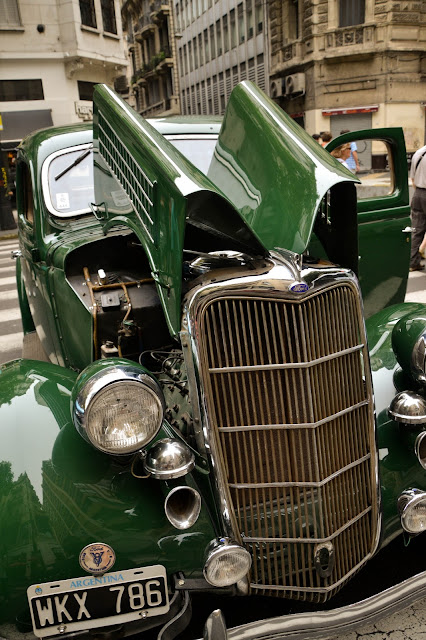El edificio de la Facultad de Ingeniería de la UBA, sobre la Avenida Las Heras, es también conocido como "La Catedral", por su estilo Gótico o Neo Gótico (cual de los dos estilos impera en su construcción supera ampliamente mis limitados conocimientos de arquitectura, por lo que dejo esa incógnita a alguien más probo en la materia).
Sus orígenes se remontan al año 1909, con la intención de construir una sede nueva para albergar la Facultad de Derecho. El arquitecto encargado de la obra fue el Uruguayo Arturo Prins. La construcción del mismo se extendió por muchos años. La piedra fundacional se coloca en 1912. Con varias etapas inconclusas, la obra se paraliza en 1938. Más que nada por razones económicas y presupuestarias. Recién en 1948 es cedida a la Facultad de Ingeniería.
Se creó toda una leyenda con respecto a lo que le sucedió a Prins. Se rumoreó por mucho tiempo que al encontrar una falla en uno de los cálculos que había hecho, y sabiendo que el edificio se desplomaría de terminar la construcción siguiendo las especificaciones técnicas de sus planos, se suicidó en su oficina de un disparo. Esto por supuesto no sucedió, pero por mucho tiempo mucha gente así lo creyó.
The building of the Engineering Faculty of the University of Buenos Aires, is also known as "The Cathedral", due to its Gothic or Neo Gothic architectural style (which of these two styles the building complies with is something that exceeds my limited architectural knowledge, and it's a debate I will leave for someone more qualified in the subject).
The original idea was to build a new building for the Law Faculty. The proyect began in 1909, under the design of Uruguayan architect Arturo Prins. Construction actually dragged on for many years. The foundation stone was placed in 1912. With various different stages of the building still unfinished, construction came to a halt in 1938, mainly due to a budget deficit. Its only in 1948 that the building is given to the Faculty of Engineering as one of its own campus buildings.
There is a legend surrounding the building and its architect. It was rumoured for some time that Prins found a flaw in his design which meant that if completed, the structure would collapse. This led to his suicide, in his office, over the original plans of the building. This of course never happened, although a lot of people, for a long time thought this to be true.
.




















































